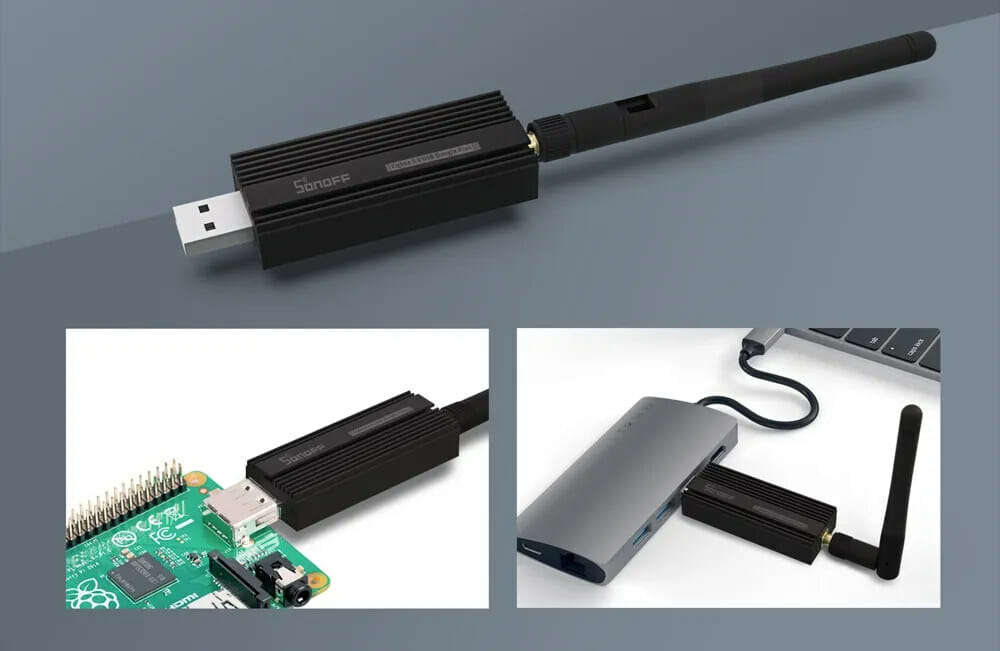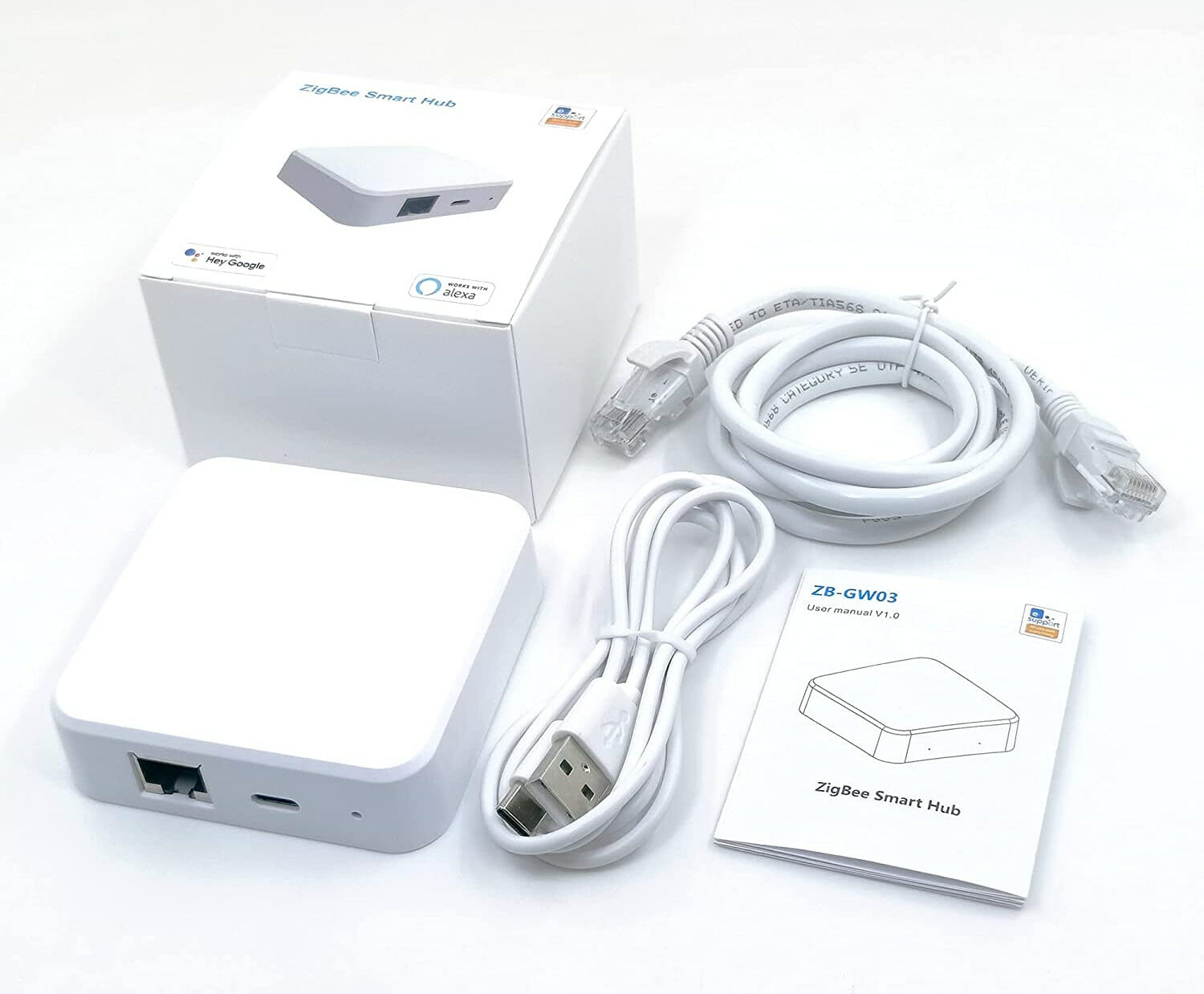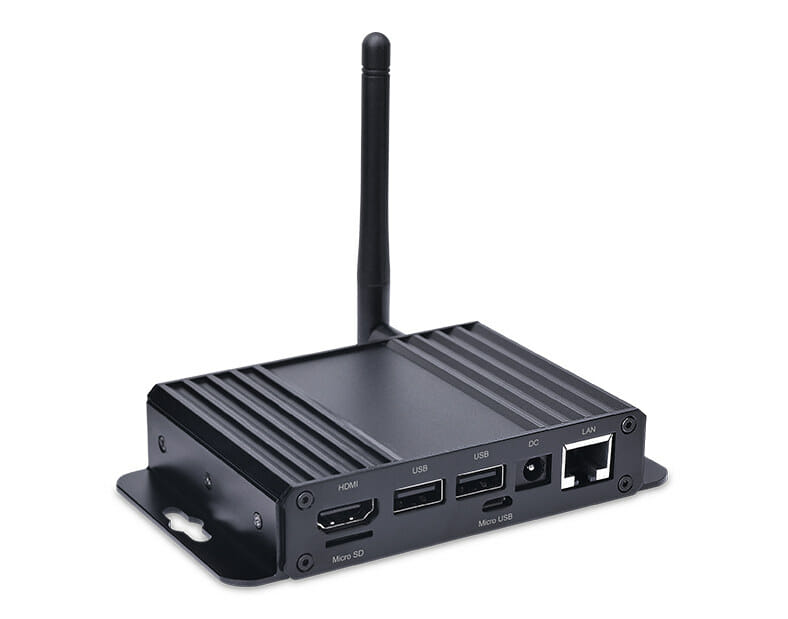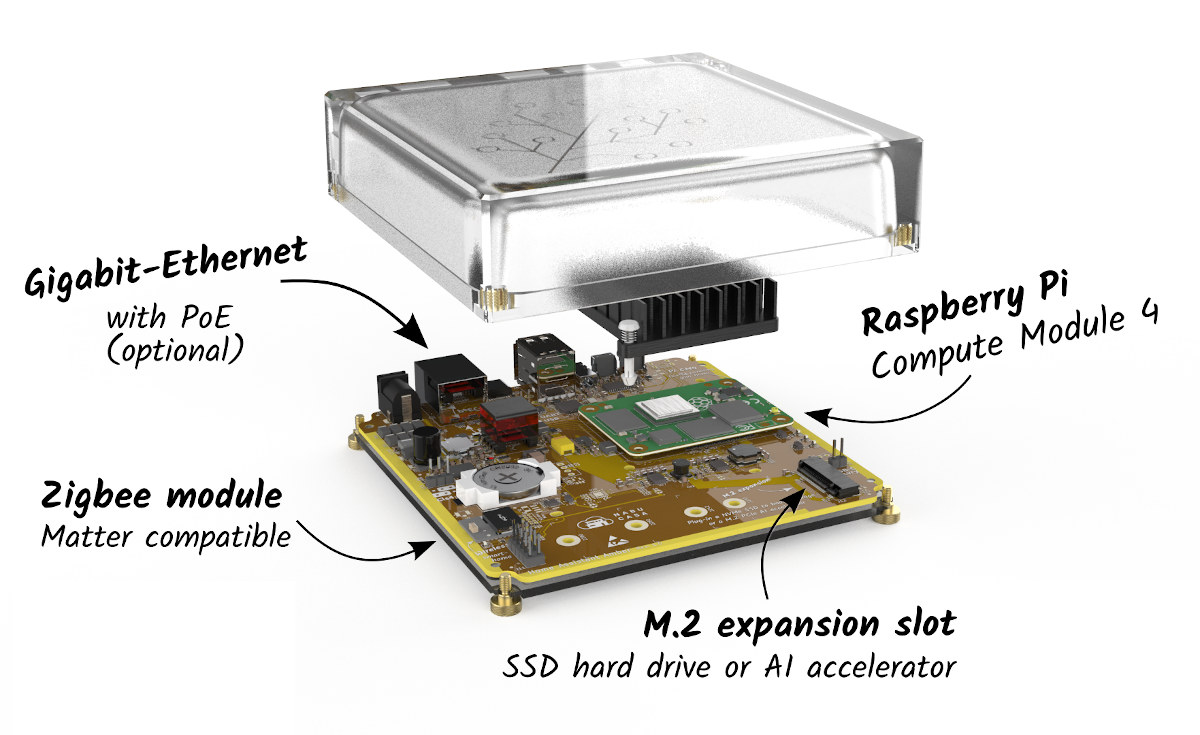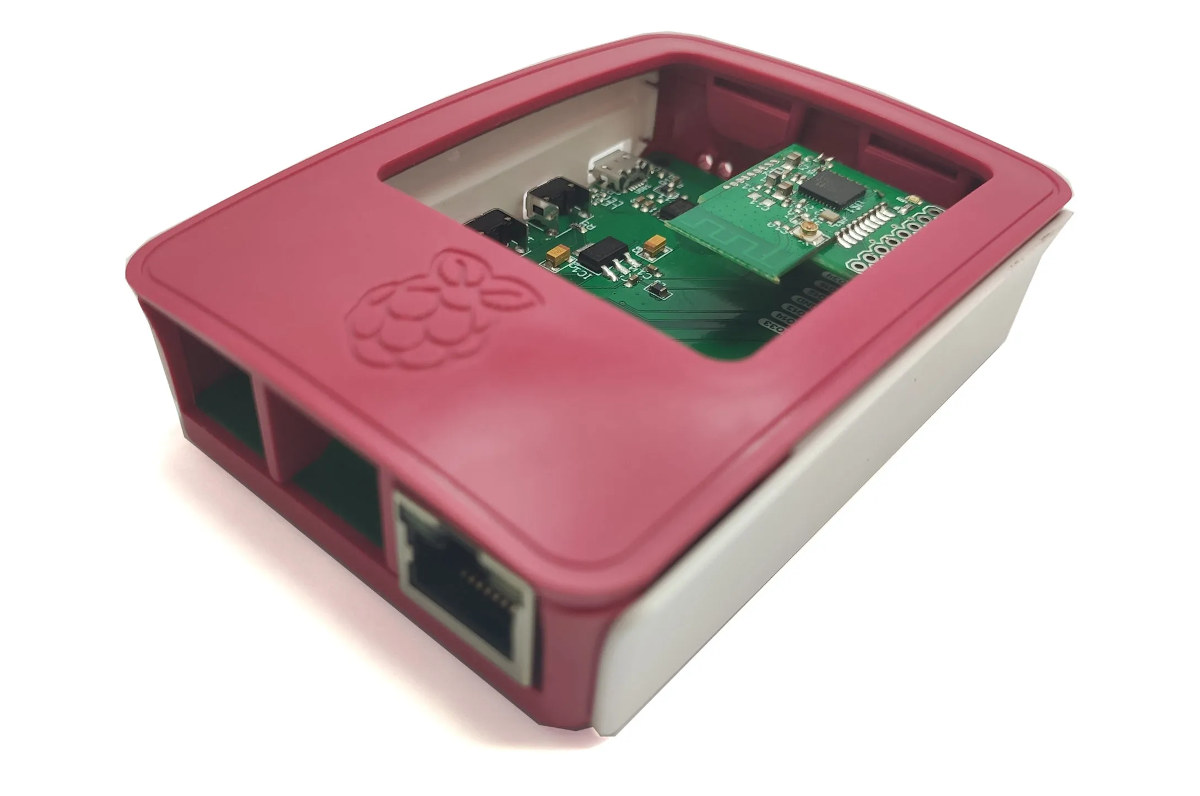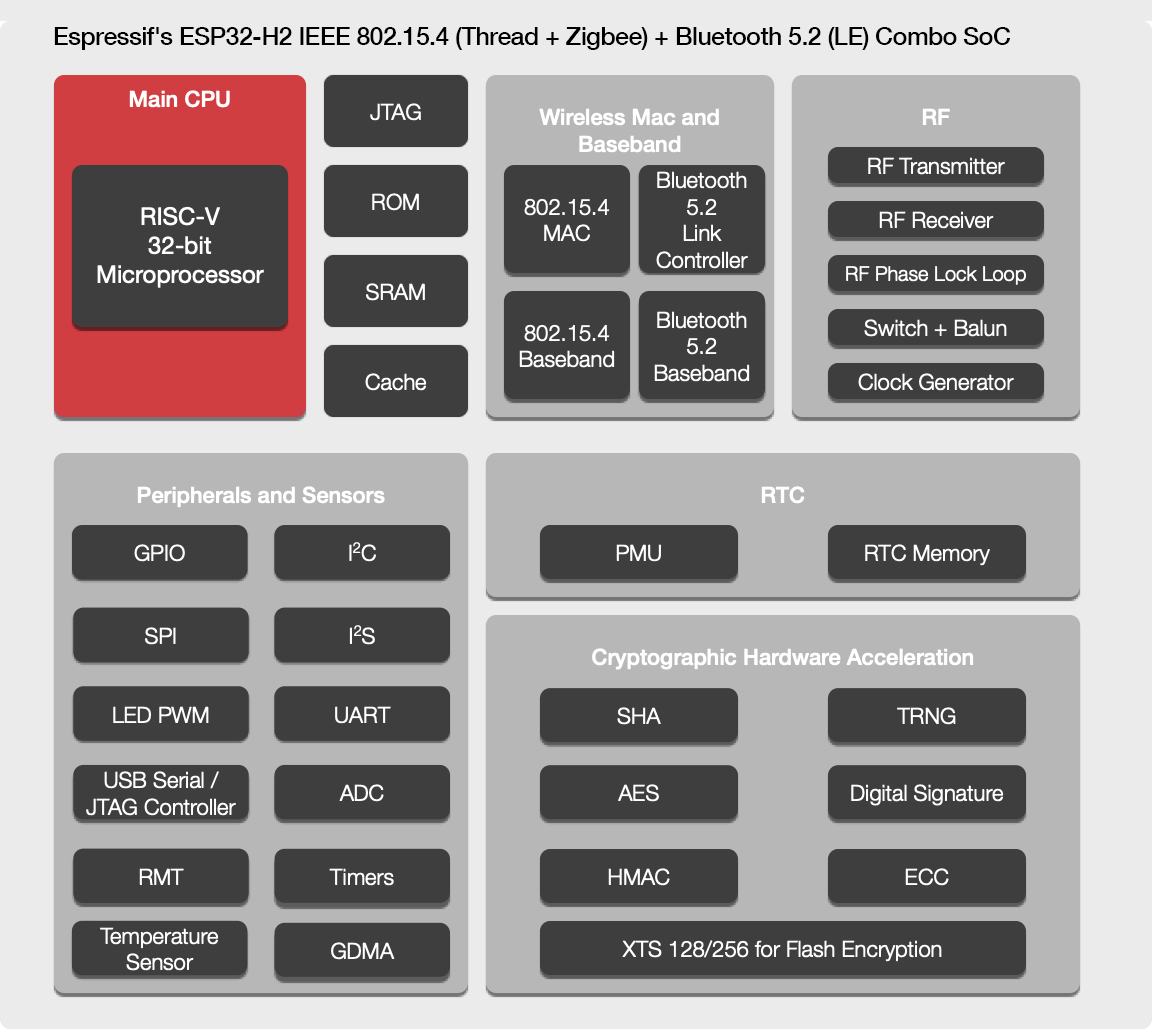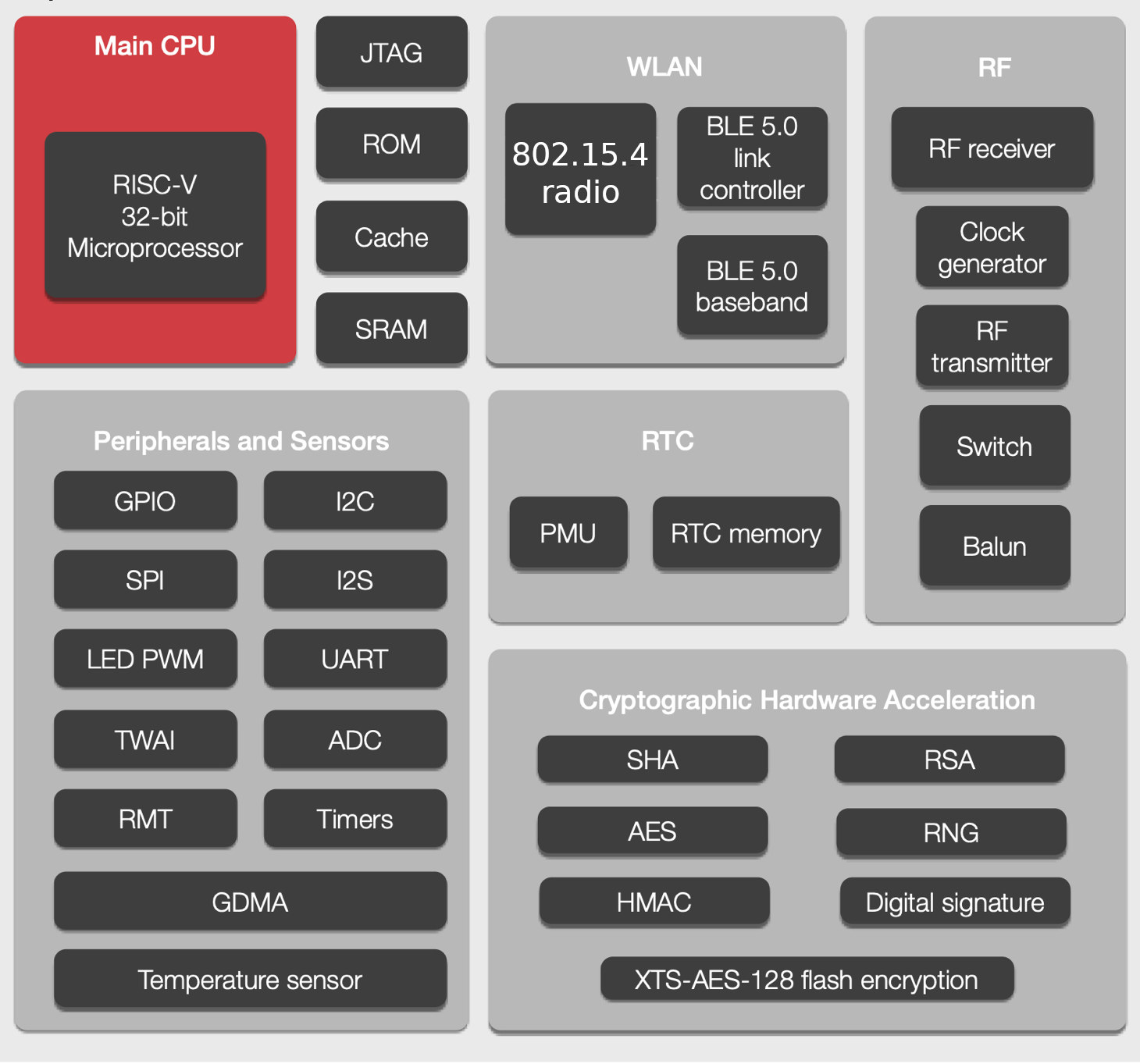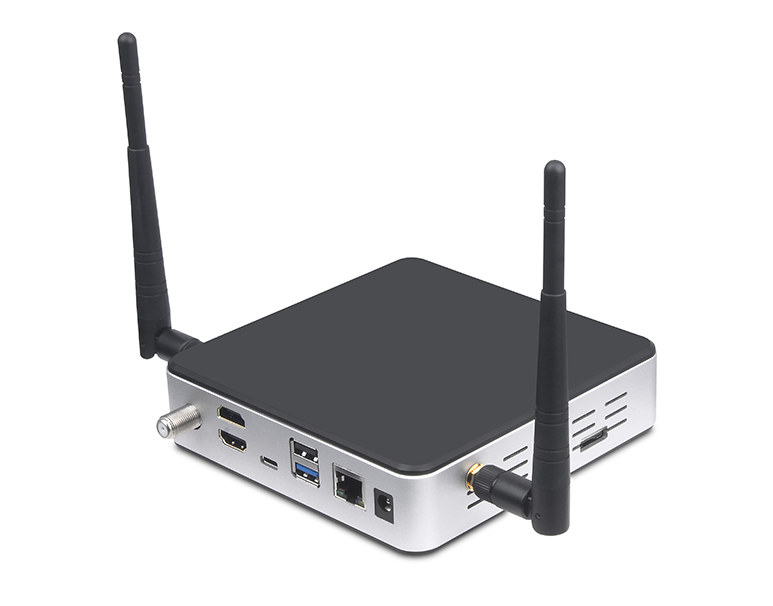ITEAD has launched a new Zigbee dongle with the Sonoff Zigbee 3.0 USB Dongle Plus powered by Texas Instruments CC2652P wireless MCU which follows the company’s Zigbee 3.0 USB Dongle based on Silicon Labs EFT32MG21 Cortex-M4 microcontroller. The dongle is pre-flashed with Z-Stack 3.x.0 coordinator firmware which enables ZHA in Home Assistant or Zigbee2MQTT compatibility. Sonoff Zigbee 3.0 USB Dongle Plus (ZBDongle-P) specifications: Wireless MCU – Texas Instruments CC2652P SimpleLink Arm Cortex-M4F multiprotocol 2.4 GHz wireless MCU with integrated power amplifier for Bluetooth 5.2 Low Energy, Thread, Zigbee 3.0 Connectivity – Zigbee 3.0 with SMA antenna connector, +20 dBm output gain Host interface – USB port with CP2102N USB to TTL chip Expansion – 5-pin IO header with programming pins Misc – Boot and reset buttons, LED, DIP switch for hardware flow control Power Supply – 5V/100mA via USB port, LDO Dimensions – 87 x 25.5 x 13.5 mm (Aluminum […]
ZB-GW03 ESP32-based Ethernet Zigbee gateway works with Tasmota firmware
ZB-GW03 is an Ethernet Zigbee Gateway compatible with eWelink mobile app and with a design similar to SONOFF ZBBridge gateway but replacing ESP8266 SoC by ESP32 SoC, and adding an Ethernet port. The ZB-GW03 gateway is apparently based on the same Silicon Labs EFR32MG21 Zigbee Arm Cortex-M33 chip and has been hacked to run Tasmota open-source software for people preferring more flexibility and/or integration with OpenHAB or Home Assistant open-source home automation frameworks via Zigbee2MQTT. ZB-GW03 gateway specifications: Main MCU – Espressif Systems ESP32 dual-core Tensilica TX6 processor @ 240 MHz with WiFi 4 and Bluetooth connectivity Zigbee MCU – Silicon Labs EFR32MG21 Arm Cortex-M33 MCU @ 80 MHz with Zigbee 3.0 connectivity Connectivity 10/100M Ethernet, WiFi, and Bluetooth via ESP32 Zigbee 3.0 via Silabs MG21 MCU with support for 128 nodes, up to 200+ meter range One 2.4 GHz Zigbee antenna One 2.4 GHz PCB antenna for WiFi Misc […]
Geniatech GTW410 – An ultra compact IoT gateway based on Snapdragon 410E SoC
After writing about Azulle Ally Snapdragon 450 mini PC, I was reminded there are other small form factor Snapdragon devices such as Geniatech GTW410 based on the earlier Snapdragon 410E quad-core processor. While the GTW410 is marketed as an “Embedded IoT Gateway”, it could also serve as an entry-level industrial mini PC with up to 2GB RAM, 16GB eMMC flash, as well as HDMI, Ethernet, and USB ports. Geniatech GTW410 specifications: SoC – Qualcomm Snapdragon 410E (APQ8016) quad-core ARM Cortex A53 processor @ 1.2 GHz with Adreno 306 GPU System Memory – 1 or 2 GB LPDDR3 @ 533MHz Storage – 8 or 16 GB eMMC 5.0 flash + micro SD 3.0 (UHS-I) slot Video Output – HDMI 1.3 up to 1080p @ 30 Hz Connectivity – 10/100M Ethernet, Integrated 802.11 b/g/n, Bluetooth 4.1, GPS with on-board antenna, optional Zigbee USB – 2x USB 2.0 host ports, 1x micro USB […]
Home Assistant Yellow – A Raspberry Pi CM4 based automation gateway (Crowdfunding)
The team behind the popular Home Assistant open-source home automation framework has just launched their second hardware with Home Assistant Yellow automation gateway based on Raspberry Pi CM4 module. This follows last year’s ODROID-N2+ based Home Assistant Blue which was a limited edition and has now been discontinued, albeit still supported. The carrier board for Home Assistant Amber is designed from scratch and notably includes Silicon Labs MGM210P Mighty Gecko Module with support for Zigbee 3.0, OpenThread, and Matter (Soon), as well as M.2 socket that can take an NVMe SSD, or an AI accelerator card. Home Assistant Yellow specifications: Supported SoM – Raspberry Pi Compute Module 4 (CM4) with Broadcom BCM2711 quad-core Cortex-A72 processor @ 1.5 GHz, up to 8GB RAM, up to 32GB storage. (Note: optional WiFI 5 and Bluetooth 5.0 connectivity not covered by regulatory approval) Storage – Support for NVMe SSD via M.2 socket, bootable for […]
ZiGate-Ethernet – An ESP32 Ethernet, WiFi, and BLE Gateway with optional Zigbee connectivity
Frédéric Dubois, aka fairecasoimeme, has recently released ZiGate-Ethernet, an home automation gateway based on Espressif Systems ESP32 wireless SoC with Ethernet, WiFi, and Bluetooth LE connectivity. The gateway can also take an optional PiZiGate+ Zigbee module for support for a wider range of home automation gizmos, and everything is designed to fit in the official Raspberry Pi 4 enclosure. ZiGate-Ethernet specifications: Wireless module – ESP32-WROOM-32E with ESP32 dual-core processor, 16MB flash, PCB antenna Connectivity 10/100M Ethernet RJ45 port implemented through LAN8720 as on several other ESP32 Ethernet boards 2.4GHz WiFI 4 Bluetooth LE 4.2/5.x Zigbee through PiZiGate+ module with PCB antenna or optional external antenna USB – Micro USB port for power and programming Expansion – 16-pin GPIO header with up to 10x GPIO, 7x ADC, UART, 5V, 3.3V, and GND Misc- Reset and Flash button, ESP32/FTDI UART selection switch, Power Supply – 5V/500mA via micro USB port Dimensions – […]
ESP32-H2 RISC-V WiSoC announced with Zigbee 3, Thread, and Bluetooth LE 5.2
Just a few days ago, we noted ESP32-H2 802.15.4 & BLE RISC-V SoC had shown up in the source code, and tried to derive specs and a block diagram from the info seeing it was similar to ESP32-C3, but swapping the WiFi radio for an 802.15.4 radio. We don’t need to guess anymore, as Espressif Systems has just announced ESP32-H2 RISC-V WiSoC with support for Zigbee 3.x, Thread 1.x through the 802.15.4 radio, as well as Bluetooth LE 5.2. So overall it’s very close to what we discussed from the information in the source code with ESP32-H2 highlights including: CPU – 32-bit RISC-V core (at up to 96 MHz) RAM – 256 KB SRAM Storage – External flash support Wireless connectivity IEEE 802.15.4 radio with Zigbee 3.x and Thread 1.x support, Matter protocol Bluetooth 5.2 (LE) radio designed in-house, with support for direct connection, Bluetooth Mesh, Bluetooth LE Audio Future […]
ESP32-H2 Bluetooth LE & 802.15.4 RISC-V SoC shows up in ESP-IDF source code
Espressif Systems is working on yet another RISC-V chip with ESP32-H2 SoC offering Bluetooth LE and 802.15.4 connectivity showing up in the ESP-IDF framework source code. A code comparison shows ESP32-H2 is very similar to ESP32-C3 with a single RISC-V core, albeit clocked at up to 96 MHz, and the first Espressif SoC without WiFi, as the WiFi radio is replaced with an 802.15.4 radio for Thread, Zigbee, etc… that can be used for the development of Home Automation, Smart Lighting, and wireless sensor network applications. While looking at the source code differences between ESP32-C3 and ESP32-H2, the really only major differences were the 802.15.4 radio and lower maximum frequency, and at the current time, it looks like most of the rest is unchanged, so it’s possible they kept the same amount of RAM (400KB), storage, and most of the same peripherals, but it could just well be the code […]
Industrial Android/Linux mini PC ships with optional HDMI input, DTV tuner, 4G LTE modem
We’re seeing several companies known for their Android TV boxes switch to higher-margin industrial Android/Linux mini PCs with, for instance, Zidoo M6 mini PC powered by Rockchip RK3566 processor and designed for IoT applications, digital signage, and more. Geniatech APC820 is another industrial mini PC running either Android or Linux, on the older, yet more powerful Rockchip RK3399 SoC, and offering a different set of options including 4K or Full HD HDMI input, digital TV tuner, and/or a 4G LTE modem. Geniatech APC820 specifications: SoC – Rockchip RK3399 hexa-core processor with 2x Cortex-A72 cores up to 1.8GHz, 4x Cortex-A53 up to 1.4GHz, Mali-T860 GPU with support for OpenGL ES1.1/2.0/3.0/3.1, OpenCL, and DirectX 11.1 System Memory – 2GB or 4GB RAM Storage – 16GB eMMC flash by default (Option for 8GB to 128GB), MicroSD card slot Video Output HDMI 2.0 up to 4Kp60 Internal LVDS connector with backlight Internal eDP connector […]


